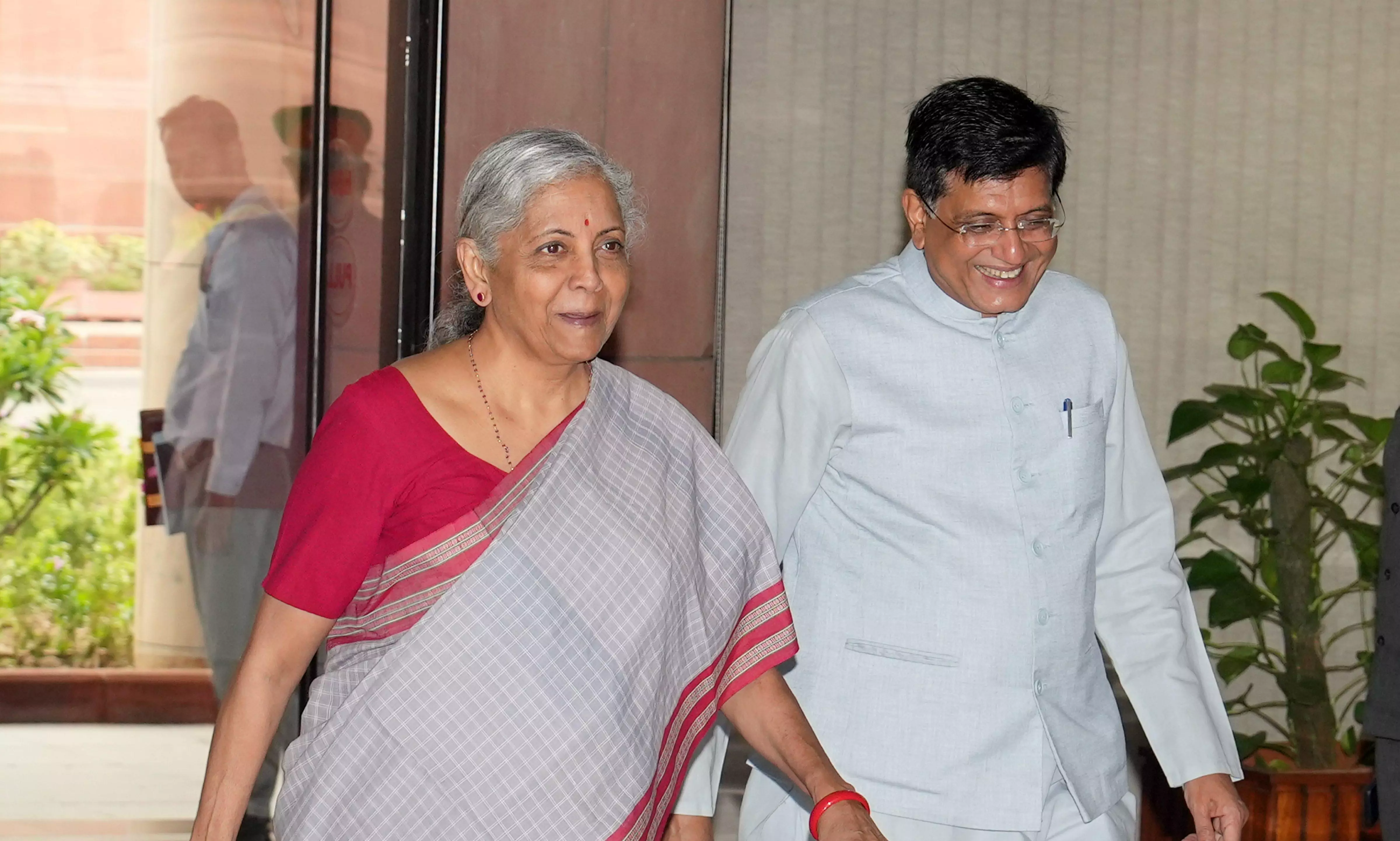
What India Inc wants: Fiscal consolidation, GST reforms, higher capex
Corporate India would government to avoid populist measures ahead of Assembly elections; it also wants to GST to be transitioned to a three-rate structure

Although Union Finance Minister Nirmala Sitharaman has frequently expressed disappointment over the lacklustre investment response from corporate India despite the substantial corporate tax cuts introduced in 2019, businesses argue that the government needs to further enhance fiscal consolidation, streamline GST issues and establish a more effective regulatory framework.
On Corporate India's wish list for this year’s Union Budget is the continuation of the downward trajectory in fiscal deficits in the coming years to demonstrate fiscal prudence and keep interest rates in check. At the same time, corporations want the government to maintain high capital expenditure to boost infrastructure and crowd private investments.
Fiscal deficit
The fiscal deficit target for FY2024 has already been revised down to around 5.6 per cent of GDP, lower than the initial estimate of 5.8 per cent. This improvement is attributed to higher-than-expected tax collections. Going forward, the fiscal deficit target for FY2025 is expected to be reduced further to around 5.1 per cent of GDP.
However, there may be some concerns that excessive fiscal consolidation could constrain growth-oriented expenditure. A balanced approach is needed to gradually reduce deficits while preserving capex.
Populist measures
Corporate India would also want the government to avoid populist measures ahead of Assembly elections that could derail fiscal consolidation. It also wants to transition the Goods and Services Tax (GST) to a three-rate structure with a low rate for essentials, a standard rate for most goods, and a high rate for luxury/demerit goods.
Corporate India wants the government to sustain the focus on capital expenditure (capex) with a minimum 20 per cent increase to around Rs12 lakh crore, surpassing pre-pandemic growth rates. The government's capital spending on infrastructure projects was Rs 9.49 lakh crore in FY2024.
Investment lacking
Critics, however, argue that corporate India's investment in capital projects has been lacking despite the favourable tax environment. Instead of channelling profits into new buildings, plants and machinery, many companies have rewarded shareholders through dividends or invested in financial instruments.
The financial health of non-financial private companies has improved post-tax cuts. Profits have surged to Rs 4,00,00 crore-5,00,000 crore in the last two financial years, up from Rs 1,00,00 crore-2,00,000 crore in previous periods.
However, this has not translated into increased capital expenditures (capex). Retained profits as a percentage of profit after tax reached 63 per cent in FY22, the highest in a decade, yet the debt-to-equity ratio has continued to decline, reaching 0.71 in FY22.
Corporate tax
In an effort to boost economic activity, the Indian government slashed corporate tax rates in 2019. The statutory corporate tax rate was reduced from 30 per cent to 22 per cent, positioning India competitively against other Asian nations.
For context, the current corporate tax rates are 25 per cent in Myanmar, 24 per cent in Malaysia, 25 per cent in Indonesia and South Korea, and 28 per cent in Sri Lanka. Even Chinese companies face a higher tax rate of 25 per cent; in Brazil, it is 34 per cent. Globally, the average corporate tax rate stands at 23.79 per cent, while the Asian average is 21.09 per cent.
Consumer expenditure
A significant factor, analysts say, was because of the slowdown in consumer demand, which began before the pandemic and worsened during it. This decreased demand led companies to use their profits to reduce debts and retain earnings rather than expand their operations.
Private final consumer expenditure (PFCE) growth is also estimated to tumble to 4.4 per cent in FY24 from 7.5 per cent in FY23, indicating a significant slowdown in consumer spending.
This is largely because of slowing growth in government final consumption expenditure, which is expected to slow down to 3.1 per cent in the second half of FY2024 from 5.1 per cent in the first half.
There has also been moderate growth in the services sector, with trade, hotels, transport and communication services expected to grow at a slower rate of 6.3 per cent in FY2024 compared to 14 per cent in the previous year.
Corporates desire
Here is the wish list of Corporate India for the Union Budget:
- Fiscal consolidation and economic growth: Maintain fiscal consolidation while supporting economic growth, aiming to keep the fiscal deficit target at around 5.9 per cent of GDP for FY24 and reduce it to 5.4 per cent for FY25.
- GST reform: Transition GST to a three-rate structure with a low rate for essentials, a standard rate for most goods and a high rate for luxury/demerit goods.
- Capital expenditure focus: Sustain the focus on capital expenditure with a minimum 20 per cent increase to around Rs12 lakh crore, surpassing pre-pandemic growth rates.
- Support for low-cost housing: Extend the interest subvention scheme to cover total housing costs up to Rs 35 lakh, up from the current Rs 25 lakh limit.
- Boost labour-intensive sectors: Initiate an Urban Employment Guarantee Programme focused on high-unemployment areas to boost sectors like apparel, footwear, toys and tourism.
- Agriculture and rural development: Increase allocations for Pradhan Mantri Awas Yojana - Grameen, Pradhan Mantri Gram Sadak Yojana and MGNREGA.
- Streamline regulatory approvals: Encourage states to streamline business regulatory approvals through the National Single Window System.
- Support for MSMEs: Establish a dedicated Micro enterprise vertical in the Ministry of MSME and modify PLI schemes to benefit more MSMEs.
- Rationalise import tariffs: Implement a three-tier duty structure with zero/low duties on raw materials, a standard rate of around 7.5 per cent for final goods, and a middle rate for intermediate goods.

